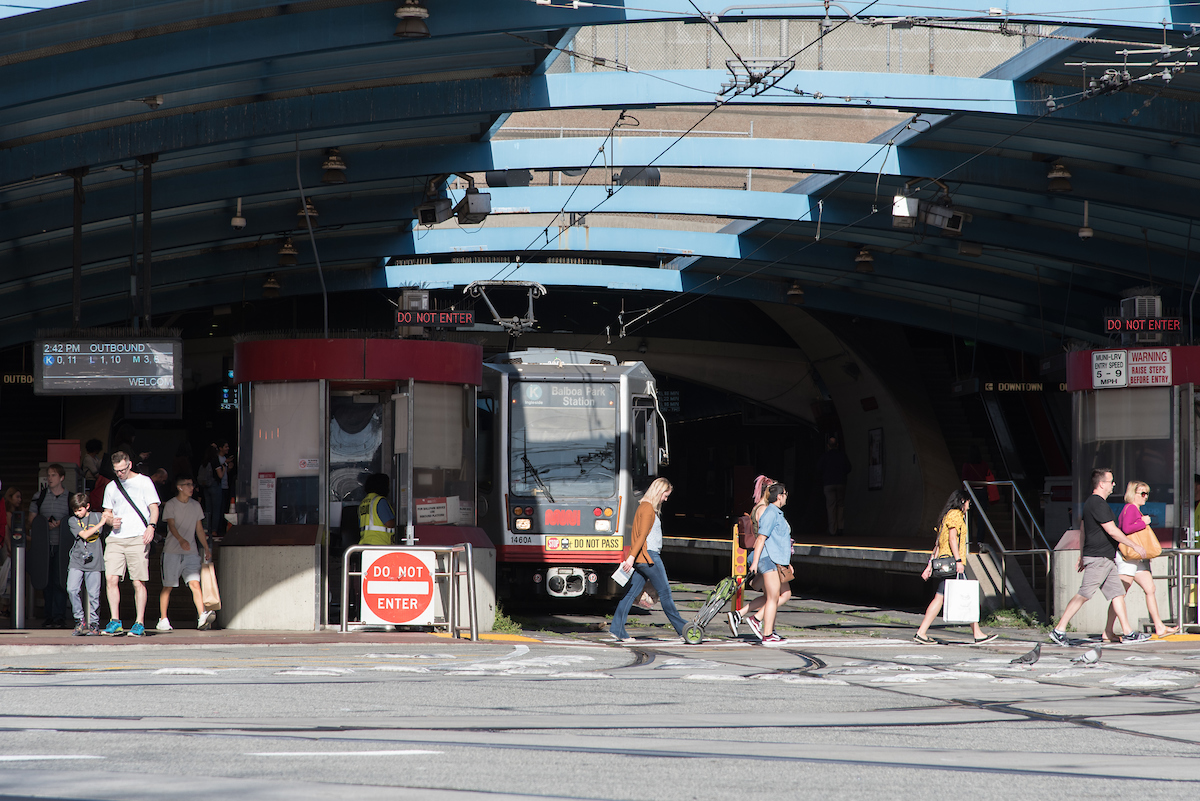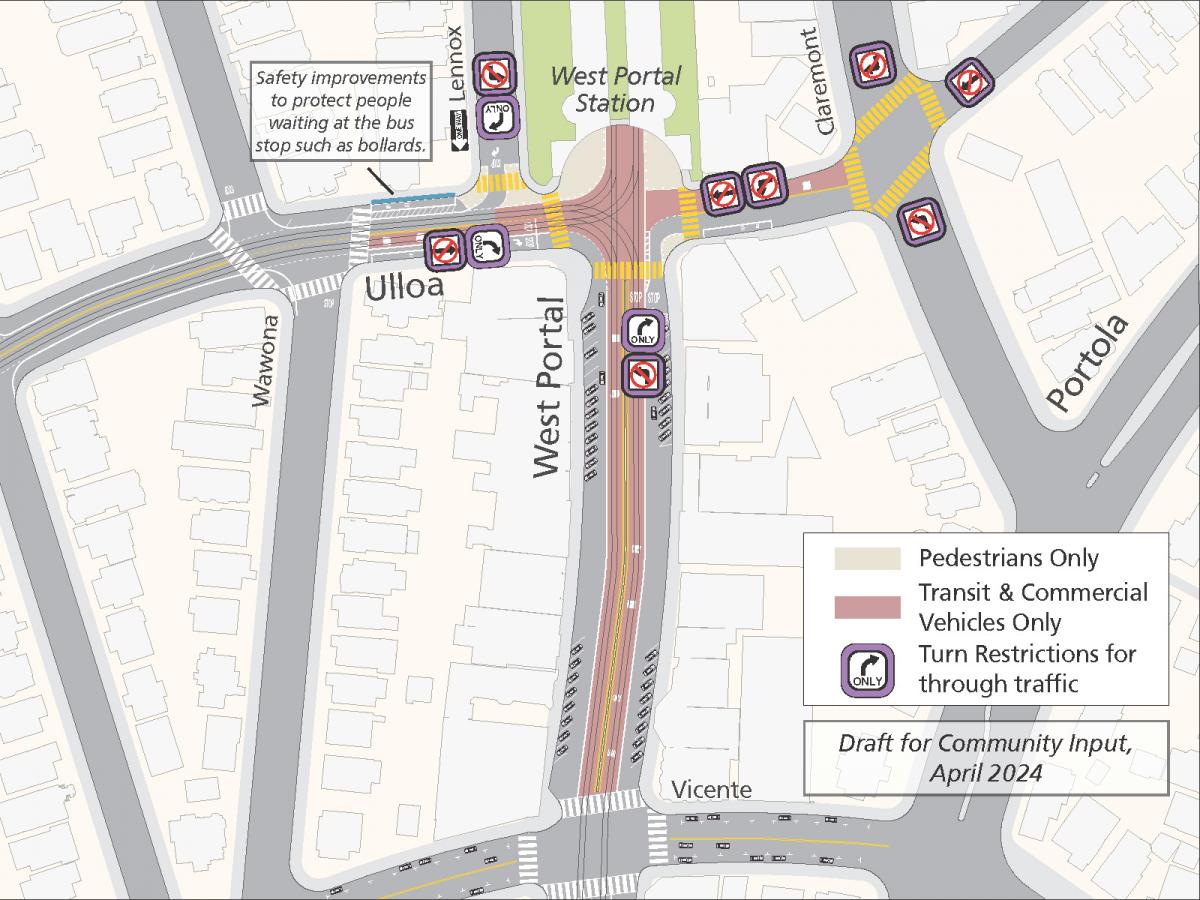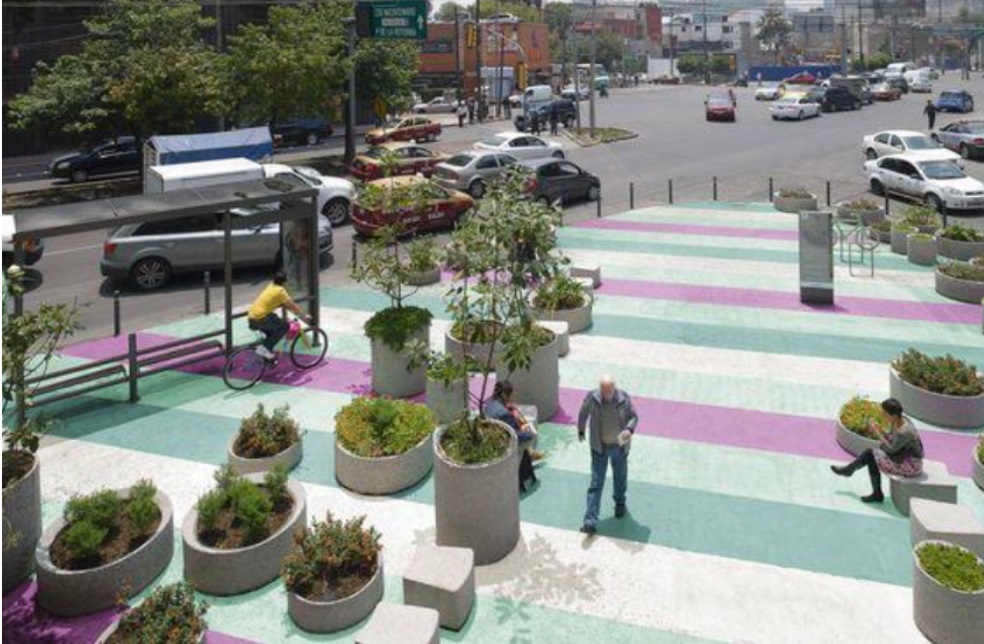By Brian Haagsman
 West Portal Station is a busy transit hub served by three rail lines and two bus routes.
West Portal Station is a busy transit hub served by three rail lines and two bus routes.
This week, we’re hosting pop-ups in West Portal and running a survey to seek your feedback on safety improvement proposals we announced for the area on April 16.
The West Portal Station area includes three Muni rail lines and two bus routes. Together, they serve 50,000 riders per day. It’s also the entrance to a vibrant commercial village where people visit restaurants, shops and offices. Every day, children and families pass through the area to go to local schools, playgrounds or the public library.
With such a high volume of people traveling through West Portal, it’s critical that the space is safe for everyone who accesses it. That means safe connections to transit. It means safe travel between homes, to businesses and to other West Portal destinations.
Tragically, a collision killed a family of four near West Portal Station in March. We have been working with Mayor London Breed and District 7 Supervisor Myrna Melgar ever since to make changes in the area.
We'll share how you can review our safety improvement proposals. We’ll also cover how to connect with our team in person and online to provide feedback about them.
How to share feedback about safety improvements for West Portal
Our proposals aim to improve intersection safety and create a more welcoming space for people who access West Portal. You can review these proposals on our West Portal Station Safety and Community Space Improvements - Proposed Design webpage.
Here’s how to connect with our teams in person and online to share feedback about the proposals.
Connect with project staff at neighborhood pop-ups
You can ask our project staff questions and share feedback with them at on-street pop-ups:
-
Tuesday, April 23, 8 – 9:30 a.m. at West Portal Station (northwest corner of West Portal Avenue and Ulloa Street). Chinese and Spanish interpretation will be available.
-
Wednesday, April 24, 4 – 5:45 p.m. outside the West Portal Branch Library (190 Lenox Way). Chinese interpretation will be available.
Fill out our online survey form
You can also fill out our online survey to provide feedback on the proposal and offer suggestions on ways to beautify the entrance to the station.
To complete the form, visit our West Portal Safety and Community Improvements Project -- Community Survey webpage.
The deadline to complete the survey is Sunday, April 28, 2024.
Understanding the proposed designs
The goal for West Portal is to create a safer and calmer intersection where Ulloa Street crosses West Portal. At the same time, we also want to make sure people can easily get to their West Portal destinations. The proposal aims to more clearly define how people move through the space. This applies to people walking, driving or taking Muni. The design would also reduce vehicle traffic on the train tracks.

At the heart of the proposal is more dedicated and protected space for people around the station entrance. Originally used for SFMTA operations vehicles, the new space would be an inviting area for people walking. It could include features like murals, seating, planters, bike share stations or other options. These would support the commercial corridor and neighborhood at large – and reflect its unique character.

Examples of materials that could be used to mark protected space for people walking such as street murals, planters and bollards.
The proposal also includes safety improvements to reduce conflicts between transit vehicles in the intersection and people walking, biking and driving. They include:
-
Simplified turns
-
A dedicated transit lane
-
Converting one block of nearby Lenox Way to one-way traffic
What’s next: feedback review and final proposal
After we carry out this outreach, our project team will review the feedback and consider changes to the proposals. Next, we will bring a final proposal to the SFMTA Board for a public hearing early this summer.
You can track the project by visiting the West Portal Safety and Community Space Improvements webpage. You can also reach out with questions or feedback to: WestPortalProject@SFMTA.com.
Published April 23, 2024 at 06:01AM
https://ift.tt/dz46igm